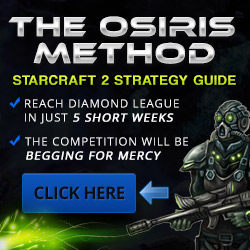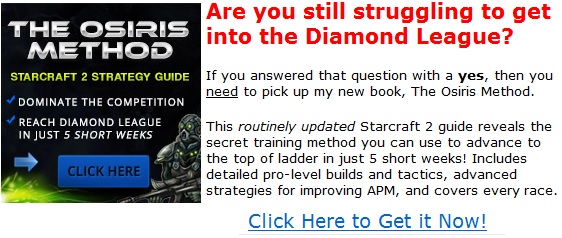Starcraft 2 Zerg Guide - HotS UpdatedHome --> Zerg Guide (you are here)
The table of contents below provides you with a quick way to access all parts of the Zerg guide. Clicking on one of the sections below will take you to a full guide to that particular aspect of the Zerg race. As an example, clicking on the "Zerg Structures" link below will take you to an overview of Zerg structures and the particulars of how Zerg construction works. On the same page, you will also find a full list of Zerg structures, an outline of the Zerg tech tree, costs, build times, and more. Zerg Guide Table of Contents Zerg Structures Zerg Structures Guide Full Guide: Starcraft 2 Zerg Structures All Zerg structures in Starcraft 2 must be built on creep. Creep is generated primarily through the Hatchery (or Lair or Hive) as well as creep tumors. New creep tumors can be planted by Queens, and existing creep tumors can create a single new tumor. Creep spreads over time from the Hatchery or Creep Tumor until a certain radius of creep has been achieved. More details on creep and creep spread can be found in the full Zerg structures guide. The Zerg race is unique in that building a structure requires the sacrifice of the Drone constructing it. Rather than building, the structure is "morphed" from the Drone itself. Cancelling a Zerg building under construction will return the Drone to the Zerg player. Zerg players can start constructing a number of buildings, train units up to the supply cap, then cancel the construction to get the Drones back, allowing the Zerg to go beyond their current supply cap (even beyond 200/200). Zerg players have no true production facility. Instead, the Hatchery (or Lair or Hive) constantly produces Larva which can be morphed into units. The Larva are able to morph into new units as tech structures are added and evolved. This allows the Zerg player to switch very easily between a large number of unit types without adding on more than the single tech structure required. In light of this, Zerg tech structures tend to be very expensive even in spite of losing the Drone. Zerg Units Guide Full Guide: Starcraft 2 Zerg Units Zerg units tend to be relatively cost inefficient compared to the other races, but make up for it by being easier to make, especially after losing an entire army. A fully maxed out Zerg player could lose their entire army only to max out again in under a minute (should they have the resources). Zerg players try to make up for the race's low resource efficiency by taking many expansions. This allows the Zerg player to leverage the Zerg's strength of rapid unit production. Zerg units are both morphed from Larva as well as existing units. Most Zerg units are morphed from Larva. Larva spawn consistently from the Hatchery (up to 3 total) but can also be produced via the Queen's Inject Larva ability. This ability causes the Hatchery to spew out 4 Larva at the end of a 40 second duration. Regularly injecting your Hatcheries is very important for Zerg players. Not injecting often enough can cost the Zerg player the game. Zerg ground units move faster on creep. This bonus is unit-specific, but even the units that benefit the least from this bonus gain a substantial speed increase while on creep. Zerg units move faster on both friendly and enemy creep, so this can work against the Zerg in ZvZ. Zerg Army Compositions Full Guide: Zerg Army Compositions In Starcraft 2, massing up a single unit is not typically as effective as incorporating several (or more) different unit types into a single army. The mix of units that makes up an army is known as the army composition. While diverse armies are ideal for most game situations, it is sometimes viable for the Zerg player to mass up a single unit type. Zerg players even at the professional level have won many games by massing Roaches in the early game or slowly building up to 20+ Mutalisks in a longer game. Despite their propensity to mass single unit types, Zerg players have the least defined army compositions of any race. The reason is that Zerg are far more reactive than any enemy race due to the way Larva works. If you lose a lot of units as a Zerg player, you can completely change your army composition on the reinforcement wave if you have enough Larva banked up. While a Terran player might stick to a "mech" composition throughout an entire game, a Zerg player can cycle through several compositions in the course of just 5 minutes in a game. One example of a popular unit composition is Roach/Hydralisk. Roaches are cheap and have a lot of health, whereas Hydralisks can hit air units, have a long range, high DPS, and are very fragile. This army composition works well because the Roaches can tank damage for the Hydralisks while the Hydralisks safely sit out in the back and deal massive DPS. Zerg Strategy Full Guide: Starcraft 2 Zerg Strategy As mentioned earlier in this Zerg guide, the Zerg race tends to be less resource efficient than other races. For example, the Baneling can be used to quickly destroy enemy light ground units, but doing so requires a large amount of resources. Just 20 supplies worth of Banelings will run the Zerg player 2000 minerals and 1000 vespene gas. Even when the Zerg wins an engagement, they often come out behind on the "resources lost" tab. As a result, Zerg players are often considered to be losing a game if they have the same number of bases as their opponent. For example, imagine a Zerg versus Protoss game where the army sizes and tech were about equal. If the Zerg and the Protoss player both had 3 total bases, top players would consider the Zerg to be currently behind in the game and more likely to lose. Zerg players in this situation would be desparate to either get a fourth expansion or to make a major attack on the Protoss player. Zerg mechanics need to be tight in order to have success with this race. Namely, players need to hit their Inject Larvas every 40 seconds and need to be diligent about spreading the creep all game long. Inject Larva is needed to quickly macro up and build Drones, while creep spread helps the Zerg's units move faster, provides vision, and helps the Zerg defend its generally large territory. Zerg Build Orders Full Guide: Zerg Build Orders Of all the races, Zerg players have the least variety as well as the most flexible build orders. Zerg players can macro up much faster than any other race thanks to Inject Larva and the low cost of Hatchery. As a result, it is often in the Zerg's best interest not to pursue an early attack and instead try to expand multiple times early in the game. Zerg players try to avoid building units and only do so when the enemy looks like they are going to make an attack. If the Zerg player is undisturbed, the best bet for the Zerg is to take a very fast third base, work on tech and upgrades, grab a fourth base, and then make whatever unit type is going to work well against. No other race can max out as quickly as the Zerg can, so it only makes sense for the Zerg to take this approach. There are however times when Zerg players can execute specific build orders with great results. For example, against a Terran player that opts for an early third Command Center, Zerg players can use the Baneling Bust build order. Zerg Tips Full Guide: Zerg Tips There are a lot of other important tricks, strategies, and mechanics specific to the Zerg race that you should know about, but do not really fit anywhere else in the guide. We have compiled these into the Zerg tips section linked above. Conclusion Check out all the sections of our Starcraft 2 Zerg guide for best results. We will be adding more strategies, build orders, and tips over time, so be sure to check back regularly for new guides! |
Don't be shy - share this page on G+ and Twitter!
Sign up for my Free Starcraft 2 Mini-Course where I reveal my best strategies not seen anywhere on this site!
Starcraft 2 Strategy Guide Privacy Policy Contact Us Disclaimer
©2013 www.osirissc2guide.com

